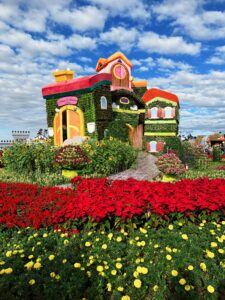
The Significance of Imaginary Authors
| Significance | Description |
|---|---|
| Narrative Depth | Imaginary authors add complexity to the story. |
| Blurring the Lines | They challenge the boundary between fiction and reality. |
| Postmodern Exploration | Common in postmodern literature. |
In the vast realm of literature and storytelling, there exists a unique category of authors, quite unlike any others. These are the imaginary authors, literary personas created by real authors to enhance the depth and complexity of their works. In this article, we will explore the fascinating world of imaginary authors, dissect their significance, and delve into some iconic examples.
Key Takeaways
Before we embark on our exploration, here are some key takeaways:
- Imaginary authors are fictional characters created by real authors within their works.
- They add layers of complexity and intrigue to the storytelling.
- Imaginary authors serve as a tool for blending fiction and reality in literature.
- Famous works featuring imaginary authors include “Pale Fire” by Vladimir Nabokov and “If on a winter’s night a traveler” by Italo Calvino.
The Purpose of Imaginary Authors
Imagine a story within a story, where the lines between fiction and reality blur. This is the magic of imaginary authors. These literary creations serve several purposes:
1. Narrative Depth
Imaginary authors inject layers of depth into the narrative. They often have their own fictional biographies, bibliographies, and distinct writing styles. Their inclusion enriches the reading experience.
2. Blurring the Lines
The existence of imaginary authors blurs the lines between the real author’s voice and the characters within the story. It challenges readers to question what is real and what is fabricated.
3. Postmodern Exploration
Many imaginary authors feature in postmodern literature, where the narrative structure is experimental and non-linear. This genre pushes the boundaries of storytelling.
Iconic Examples of Imaginary Authors
Let’s delve into some iconic examples of imaginary authors in literature:
1. Charles Kinbote in “Pale Fire” by Vladimir Nabokov
In Nabokov’s “Pale Fire,” Charles Kinbote is a fictional character within the story who claims to be the editor of a poem written by John Shade, another fictional character. Kinbote’s annotations and commentary add a layer of complexity to the narrative.
2. Silas Flannery in “If on a winter’s night a traveler” by Italo Calvino
Calvino’s novel “If on a winter’s night a traveler” features Silas Flannery, an imaginary author whose books are sought after by the protagonist. This novel is a labyrinthine exploration of storytelling and reader involvement.
3. Fergus Kilpatrick in “The Atrocity Exhibition” by J.G. Ballard
Ballard’s work is known for its experimental narrative structure. In “The Atrocity Exhibition,” Fergus Kilpatrick is an imaginary author whose writings and theories contribute to the novel’s disorienting atmosphere.
Real-Life Imagination
The concept of imaginary authors highlights the boundless creativity of real authors. It’s a testament to their ability to craft not only characters and worlds but also entire literary personas. These imaginary authors challenge readers to engage more deeply with the text, pondering the nature of storytelling itself.
As you explore the world of literature, keep an eye out for these intriguing literary creations. They are not just characters; they are manifestations of the author’s imagination and a bridge between the real and the fictional.
The Art of Character Creation
Creating an imaginary author is akin to crafting a character, but with a unique twist. Real authors have the power to bestow not only a name and a backstory but also an entire body of work to these literary personas.
1. Name and Identity
Imaginary authors typically have distinct names and identities. These names are carefully chosen to align with the theme and style of the work. The character’s identity, including their nationality, era, and literary influences, is meticulously planned.
2. Bibliography
One of the most intriguing aspects of an imaginary author is their bibliography. Real authors create a list of fictional books, essays, and poems attributed to the imaginary author. These titles often reflect the central themes of the work in which they appear.
3. Writing Style
Just as real authors have unique writing styles, imaginary authors possess distinctive writing styles too. This adds another layer of authenticity to their character.
Why Real Authors Craft Imaginary Authors
The creation of imaginary authors serves various literary purposes, making them valuable tools in the writer’s toolkit.
1. Satire and Critique
Imaginary authors can be used to satirize or critique certain literary or philosophical movements. By inventing an author with extreme or absurd views, real authors can comment on real-world ideologies.
2. Narrative Complexity
For authors who enjoy playing with narrative complexity, imaginary authors provide the perfect canvas. They can introduce metafictional elements and blur the lines between the real and the fictional.
3. Reader Engagement
Imaginary authors invite readers to become active participants in the story. Readers may find themselves researching the works of the imaginary author or pondering the author’s intentions, blurring the line between fiction and reality.
The Reader’s Dilemma
Encountering an imaginary author in a work of fiction can be a perplexing experience for readers. It challenges them to navigate a literary landscape where the traditional boundaries of authorship and storytelling are stretched and reshaped.
Summary Table: The Craft of Imaginary Authors
| Crafting Imaginary Authors | Description |
|---|---|
| Character Creation | Careful construction of a unique literary persona. |
| Bibliography | Creating fictional books, essays, and poems. |
| Writing Style | Developing a distinct writing style for the character. |
For more literary insights and book reviews, don’t forget to check out Book Reviews on SearchSynonyms.com.
Read more about imaginary authors
Looking for the place where this picture was taken?
Comment on our instagram and we will reply.




